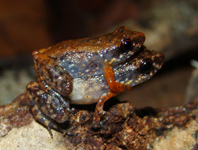Abstract
Morrone (2018) provided a general protocol to undertake biogeographical regionalizations consisting in seven steps, namely 1. defining the study area, 2. assembling distributional data, 3. identifying natural areas, 4. discovering area relationships, 5. defining boundaries/transition zones, 6. regionalization and, 7. area nomenclature. This protocol is aimed at facilitating communication between cross-domain researchers and contributing to the development of a truly integrative biogeography. Here I would like to discuss some ideas raised by Morrone (2018) and show that comparative biogeographical methods (sensu Parenti and Ebach 2009) are based on a cladistic rationale which provides the ontological framework to address this issue i.e. initiate biogeographical regionalizations leading to an integrative biogeography. This kind of standardisation has already been used in different context of biogeographical analysis and highlighted interesting results (Hoagstrom et al., 2014; Ung et al., 2016, 2017).
References
Beatty, J. (1987) On behalf of the semantic view. Biology and Philosophy, 2, 17–23.
https://doi.org/10.1007/BF00127560
Ebach, M.C. (2013) The bioregionalisation revival. Zootaxa, 3635 (3), 269–274.
https://doi.org/10.11646/zootaxa.3635.3.6
Ebach, M.C. & Parenti, L.R. (2015) The dichotomy of the modern bioregionalisation revival. Journal of Biogeography, 42, 1801–1808.
https://doi.org/10.1111/jbi.12558
Grand, A. (2013) Représentation sémantique des phénotypes: Métamodèle et ontologies pour les caractères taxonomiques et phylogénétiques. PhD Thesis, Museum National d’Histoire Naturelle, Paris, 338 pp.
Guarino, N. & Giaretta, P. (1995) Ontologies and knowledge bases: towards terminological clarifications. In: Mars, N.J.P. (Ed.), Towards very large knowledge bases: knowledge building and knowledge sharing. IOS Press, Amsterdam, pp. 25–32.
Hoagstrom, C.W., Ung, V. & Taylor, K. (2014) Miocene rivers and taxon cycles clarify the comparative biogeography of North American highland fishes. Journal of Biogeography, 41, 644–658.
https://doi.org/10.1111/jbi.12244
Lloyd, E.A. (1986a) Thinking about models in evolutionary theory. Philosophica, 37, 87–100.
Lloyd, E.A. (1987a) Confirmation of ecological and evolutionay models. Biology and Philosophy, 2, 277–293.
Michaux, B. (2010) Biogeology of Wallacea: Geotectonic models, areas of endemism, and natural biogeographical units. Biological Journal of the Linnean Society, 101, 193–212.
https://doi.org/10.1111/j.1095-8312.2010.01473.x
Morrone, J.J. (2009) Evolutionary biogeography: An integrative approach with case studies. Columbia University Press, New York, 304 pp.
Morrone, J.J. (2018) The spectre of biogeographical regionalization. Journal of Biogeography, 45 (2), 282–288.
https://doi.org/10.1111/jbi.13135
Nelson, G.J. & Platnick, N.I. (1981) Systematics and biogeography: Cladistics and vicariance. Columbia University Press, New York, 567 pp.
Parenti, L.R. & Ebach, M.C. (2009) Comparative biogeography: Discovering and classifying biogeographical patterns of a dynamic Earth. University of California Press, Berkeley, 295 pp.
Thompson, P. (1986) The interaction of theories and the semantic conception of evolutionary theory. Philosophica, 37,73–86.
Thompson, P. (1987) A defense of the semantic conception of evolutionary theory. Biology and Philosophy, 2, 26–32.
Thompson, J. (2007) Formalisations of evolutionary biology. In: Matthen, M. & Stephens, M. (Eds.), Handbook of the Philosophy of Science. Philosophy of Biology, Elsevier, Amsterdam, pp. 485–523.
https://doi.org/10.1016/B978-044451543-8/50023-X
Ung, V., Zaragüeta i Bagils, R. & Williams, D.M. (2016) Comparative biogeography of southeast Asia and the West Pacific region. Biological Journal of the Linnean Society, 117, 372–385.
https://doi.org/10.1111/bij.12670
Ung, V., Michaux, B. & Leschen, R.A.B. (2017) A comprehensive vicariant model for southwest Pacific biotas. Australian Systematic Botany, 29, 424–439.
https://doi.org/10.1071/SB16032

